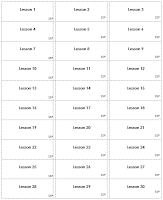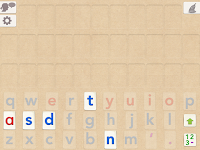I can't find the source of my pictures but you can find similar ones at KizClub.
We handed out some of each of these symbols to the kids and the expectation was that when I read about the item they had they would hand me the symbol. When they handed me the symbol, the kid got to pull the caterpillar through the book. I have a big board book copy and a hungry caterpillar that would fit through the holes.
For each child, I made hungry caterpillars from muffin cups that they could use to learn to spell their name, or to practice spelling their name in a fun way. I used alphabet stickers, mini muffin cups, scraps of paper, bristol board and velcro. Dollarama sells patterned muffin cups, and I was able to find these green gingham ones. I could not find red muffin cups, so I improvised and used the gold ones, I already had a home, to make his head. I used scraps of paper to add the details. Then I laminated all the pieces and velcroed them all together.






































